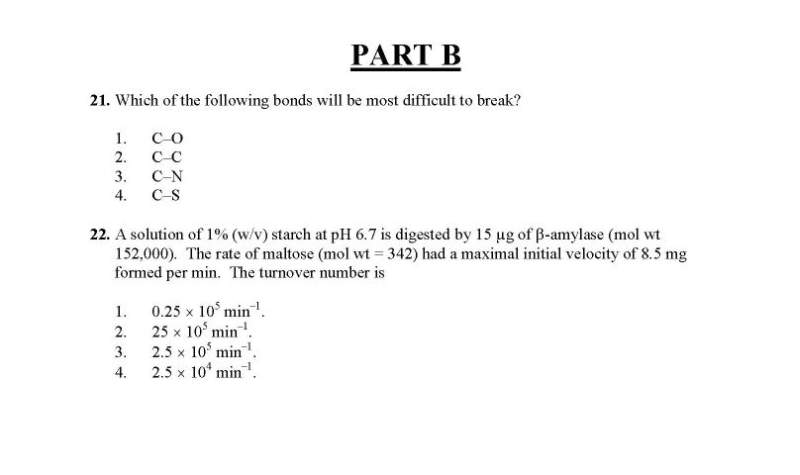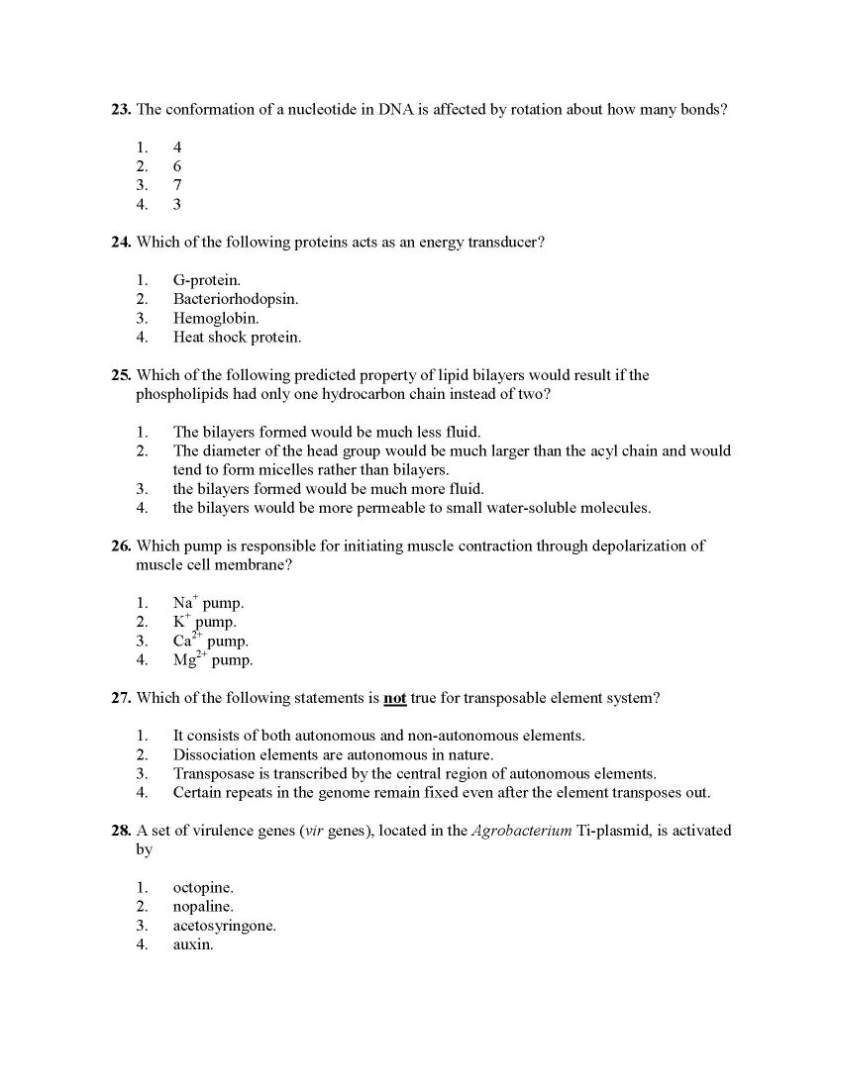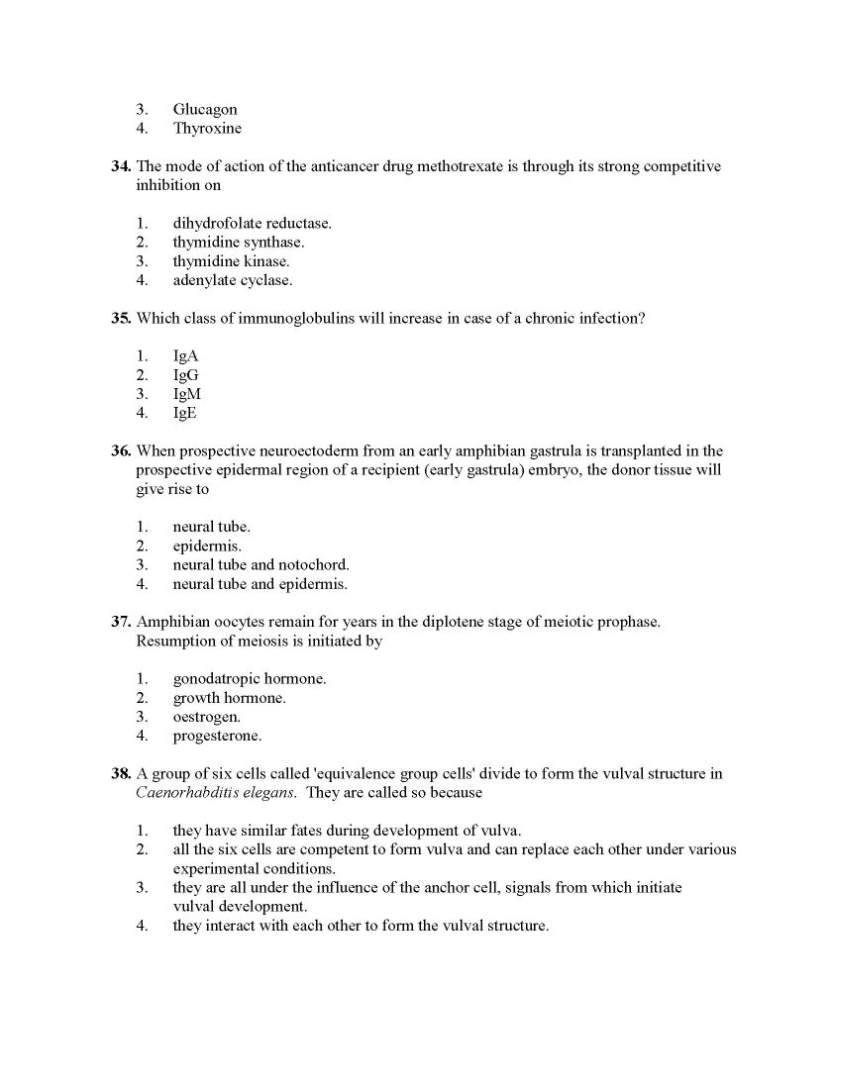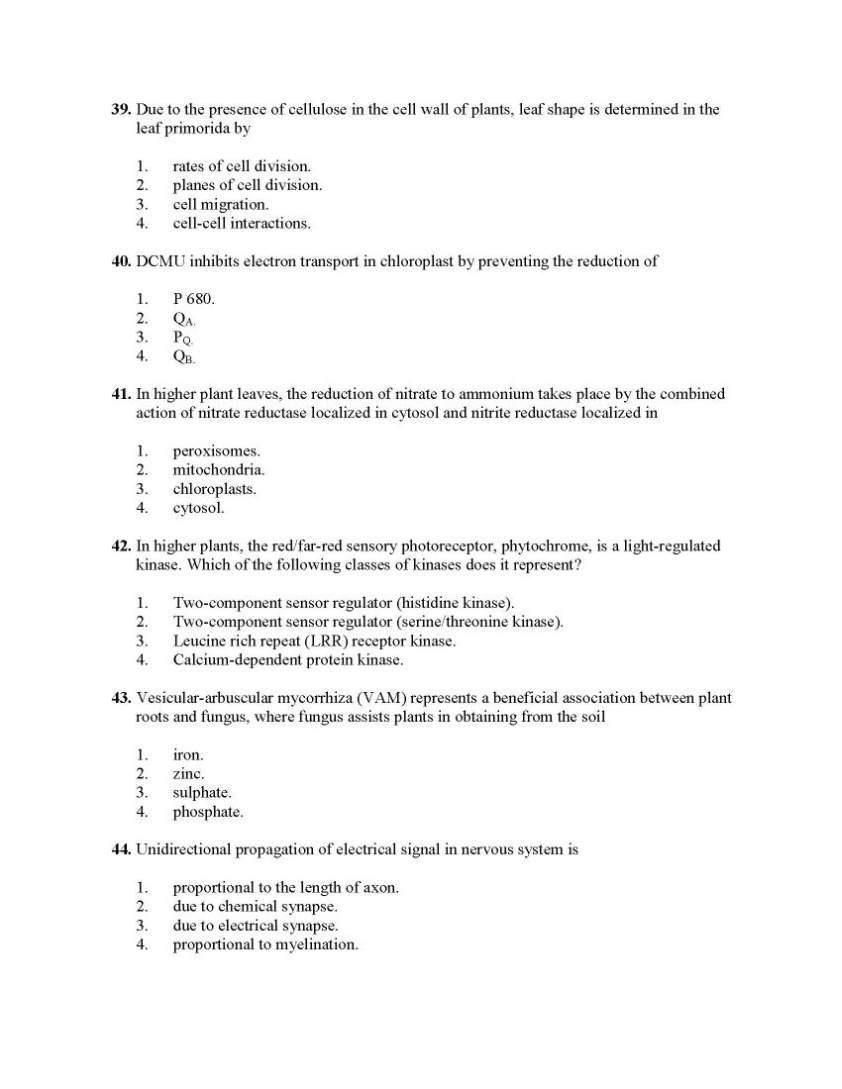|
#2
26th November 2014, 08:56 AM
| |||
| |||
| Re: CSIR NET Exam Life Sciences Model Question Paper
As you want to get the CSIR NET Exam Life Sciences Model Question Paper, so I am giving you some questions of that paper. Which of the following bonds will be most difficult to break? 1. C–O 2. C–C 3. C–N 4. C–S A solution of 1% (w/v) starch at pH 6.7 is digested by 15 µg of -amylase (mol wt 152,000). The rate of maltose (mol wt = 342) had a maximal initial velocity of 8.5 mg formed per min. The turnover number is 1. 0.25 105 min–1. 2. 25 105 min–1. 3. 2.5 105 min–1. 4. 2.5 104 min–1. The conformation of a nucleotide in DNA is affected by rotation about how many bonds? 1. 4 2. 6 3. 7 4. 3 Which of the following proteins acts as an energy transducer? 1. G-protein. 2. Bacteriorhodopsin. 3. Hemoglobin. 4. Heat shock protein. Which of the following predicted property of lipid bilayers would result if the phospholipids had only one hydrocarbon chain instead of two? 1. The bilayers formed would be much less fluid. 2. The diameter of the head group would be much larger than the acyl chain and would tend to form micelles rather than bilayers. 3. the bilayers formed would be much more fluid. 4. the bilayers would be more permeable to small water-soluble molecules. Which pump is responsible for initiating muscle contraction through depolarization of muscle cell membrane? 1. Na+ pump. 2. K+ pump. 3. Ca2+ pump. 4. Mg2+ pump. Which of the following statements is not true for transposable element system? 1. It consists of both autonomous and non-autonomous elements. 2. Dissociation elements are autonomous in nature. 3. Transposase is transcribed by the central region of autonomous elements. 4. Certain repeats in the genome remain fixed even after the element transposes out. A set of virulence genes (vir genes), located in the Agrobacterium Ti-plasmid, is activated by 1. octopine. 2. nopaline. 3. acetosyringone. 4. auxin. When two mutants having the same phenotype were crossed, the progeny obtained showed a wild-type phenotype. Thus the mutations are 1. non-allelic. 2. allelic. 3. segregating from each other. 4. independently assorting. A conjugation experiment is carried out between F+ his+ leu+ thr+ pro+ bacteria and F– his– leu– thr- pro- bacteria for a period of 25 minutes. At this time the mating is stopped, and the genotypes of the recipient F– bacteria are determined. The results are shown below: Genotype Number of colonies his+ 0 leu+ 13 thr+ 26 pro+ 6 What is the probable order of these genes on the bacterial chromosome? 1. thr, leu, pro, his 2. pro,leu, thr and the position of his cannot be determined. 3. thr, leu, pro, and the position of his cannot be determined. 4. his, pro, leu, thr Two varieties of maize averaging 48 and 72 inches in height, respectively, are crossed. The F1 progeny is quite uniform averaging 60 inches in height. Of the 500 F2 plants, the shortest 2 are 48 inches and the tallest 2 are 72 inches. What is the probable number of polygenes involved in this trait? 1. Four. 2. Eight. 3. Sixteen. 4. Thirty two. Repair of double strand breaks made during meiosis in the yeast Saccharomyces cerevisiae 1. occurs mostly by non-homologous end joining. 2. occurs mostly using the sister chromatid as a template. 3. occurs mostly using the homologous chromosome as a template. 4. is associated with a high frequency of mutations.      For full question paper I am uploading a pdf file which is free to download: |